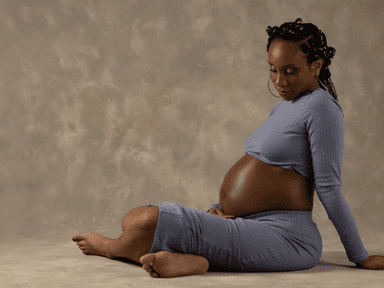This Obstetrician Recommends Midwifery Care:
But Why are Midwives in Short Supply?
By Leslie Farrington, MD, Cofounder of Black Coalition for Safe Motherhood
In 2014 I learned about the worsening maternal mortality statistics in the US, and the racial disparities in maternal health, which could not be explained away by socioeconomic or medical risk factors. I decided a community-based solution was necessary because, as an African American Obstetrician, I had no expectation that my fellow Obstetricians would soon recognize how racism permeated our specialty and impacted the lives of birthing people, especially Black women.
Black Coalition for Safe Motherhood promotes the ACTT Curriculum for Black health care consumers to advocate for their rights to safe respectful medical services. ACTT stands for self-affirming and potentially lifesaving steps to take in the office, clinic, hospital, and especially on Labor & Delivery:
- Ask questions until you understand the answers.
- Claim Your space — Physical and Mental.
- Trust Your Body
- Tell Your story
If Black birthing people were cared for by Black Midwives and other birth workers like doulas, who listen to and support them, research shows they would have better outcomes and less traumatic experiences of care. And there would be little need to ACTT. But culturally congruent care is hard to find because of the lack of Black Midwives. And many women mistakenly believe that obstetrical care is safer than midwifery care.
Recently I learned how Obstetricians virtually eliminated the centuries old practice of Traditional Midwifery in North America and medicalized birth. The result has manifested over the last several decades in the rising c-section rates and, to an unknown extent, worsening maternal health statistics in the US, especially for Black and Indigenous birthing people. Most Obstetricians are not aware of the history of the specialty, and they do not see the obvious effects on the business of birthing. Even if they were aware, hospitals are too invested in the status quo to adopt the midwifery model of care. The fact that racism outside of obstetrics plays a large part in the Black Maternal Health Crisis does not diminish the impact of obstetric dominance and medicalization of birth.
The benefits of Midwifery are not well known in this country because 90% of births are attended by Obstetricians. In European nations most births are supported by midwives – with much lower rates of poor outcomes and at half the cost of US maternity care. Even though it is well known in the public health sector that Midwives Save Lives, we do not see hospitals rushing to reduce the profitable high intervention business of Obstetrics.
Public health experts, Black, Brown, and Indigenous reproductive justice scholars, activists, and birth workers, all can see that the emperor has no clothes on, but doctors and hospitals still see themselves as fully dressed. This is not surprising. After all, The statue of the Father of Gynecology J. Marian Sims was only recently removed from its Central Park location because his craft was developed on the bodies of enslaved women. Now the American College of Obstetricians and Gynecologists and the American Medical Association acknowledge their racist origins, policies, research, education, and mistreatment of non-white patients, and have developed strategic plans to increase equity, diversity, and inclusion, and eliminate racism in medicine.
But that’s not the same as recognizing that Obstetricians put Traditional Midwives (especially Black Midwives) out of business by slandering them and virtually outlawing them in the early 1900’s. By denigrating midwifery care, pathologizing the natural process of birth, and instilling fear of complications and pain, doctors persuaded women to give birth at the hospital under their care. By touting the benefits of anesthesia, forceps delivery, episiotomy, and promoting in-hospital birth, doctors and hospitals were able to capitalize on the new specialty.
Interventions of increasing risk and complexity, and their routine use – without proof of benefits for the 80% of birthing people who are low risk – have caused harm not just because of their invasive nature, but because the birthing person is subjected to various forms of persuasion and coercion (without informed consent) to do what doctors believe is best for them and their babies. Many of the practices employed on Labor & Delivery interfere with the natural process of birth. When patients ask to avoid those interventions (which often make life easier for the staff or more money for the hospital) they are told they are not allowed to do what they want for their labor and birth. In a 2019 survey of women who gave birth in US hospitals 28% reported mistreatment. Black people report discrimination in about one third of their medical encounters.
Hospitals and doctors are comfortable placing blame on patients for poor outcomes and avoid transparency about those outcomes. It may take decades for Obstetricians to embrace the midwifery model of care, collaborate with midwives, support out of hospital birthing options, and listen mindfully to all the people they serve. That is why it is up to the consumers of maternity services and birth justice advocates, like Black Mamas Matter Alliance, to light the way forward. In the meantime, while pushing for improvement, there is the option to ACTT.

